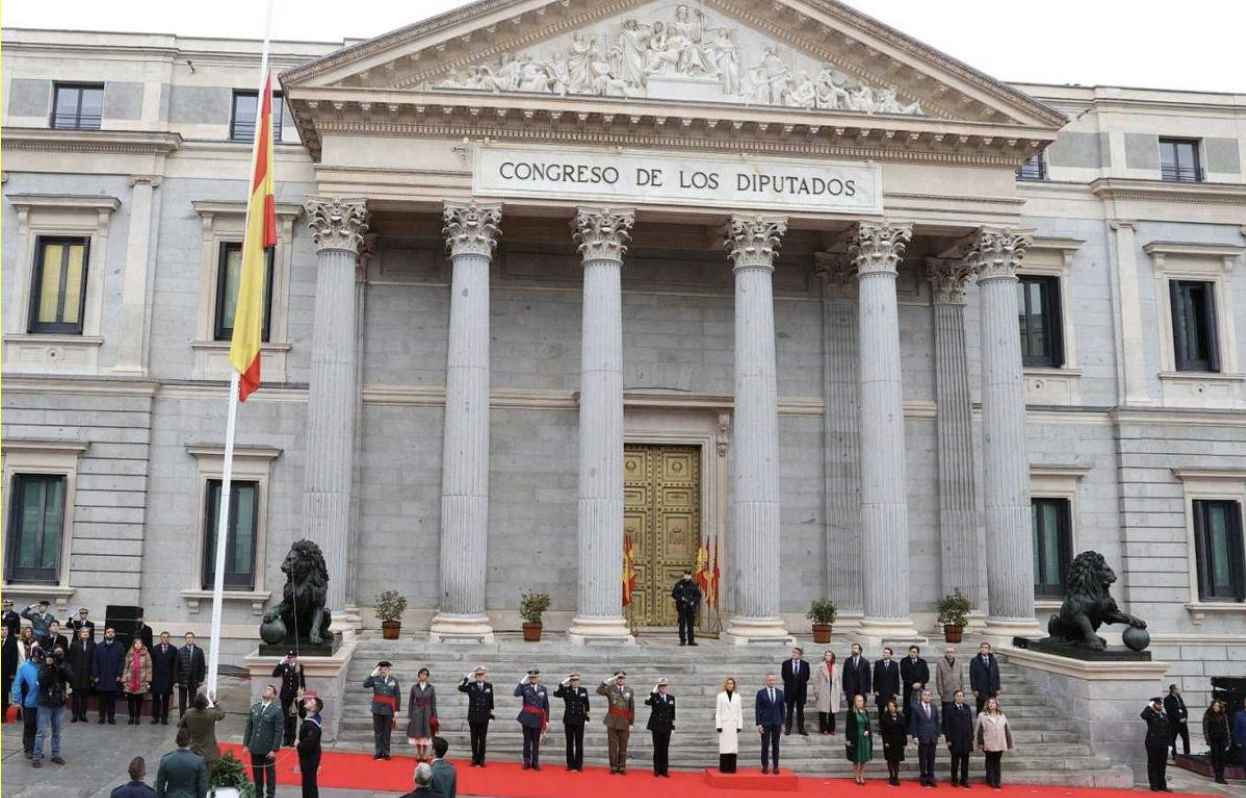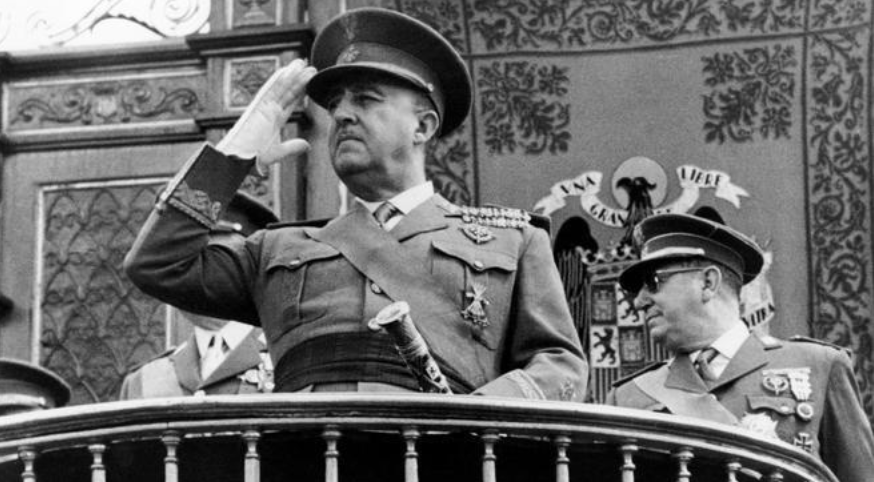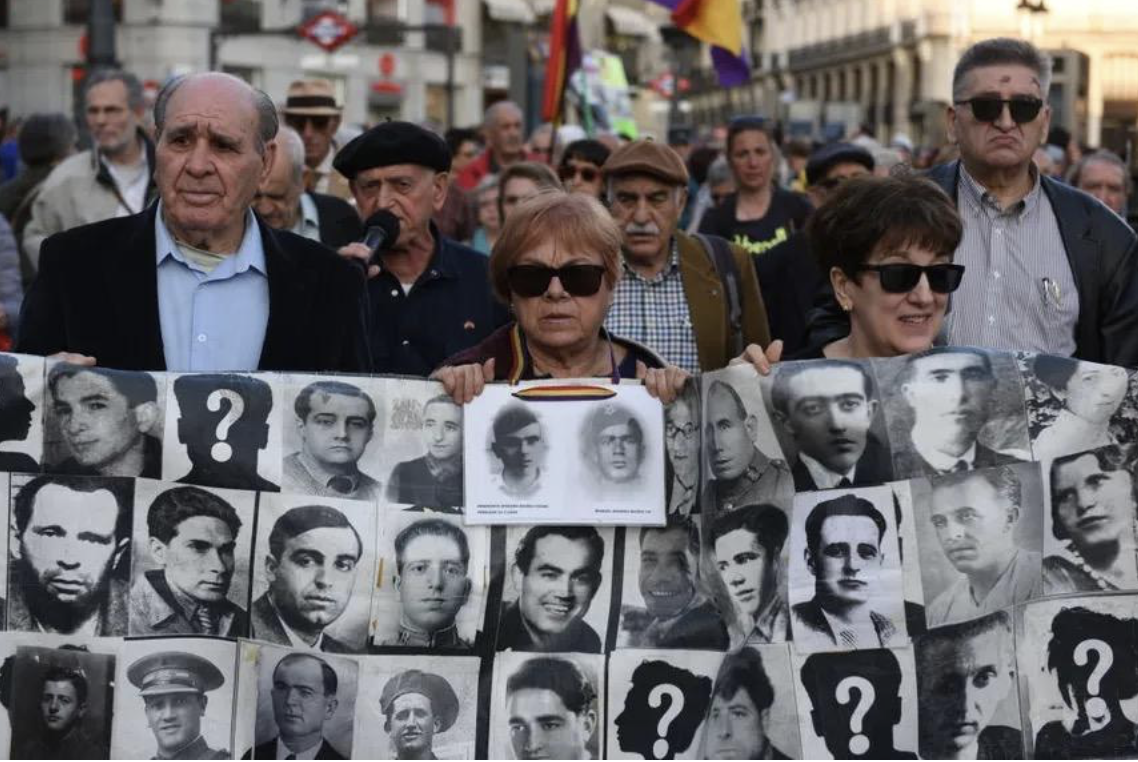50 Years After the Fall of Franco’s Dictatorship - Where Does Spain Stand Today?
By: Lavinia Tacke, reading time: 4 minutes.
44th anniversary of the Spanish Constitution on December 6, 2019
https://fluge.es/en/institutional-act-spanish-constitution-day/
Fifty years after Spain’s last dictatorship, the country still grapples with its turbulent past while shaping its future. In 1975, the last dictatorship in Europe came to an end when the Spanish dictator Francisco Franco died on November 20th. The Franco dictatorship was one of the longest in Europe, lasting from 1939 to 1975. It is known for its extreme brutality against the Spanish people, including the establishment of concentration camps, the use of forced labor, and executions. It is estimated that between 200,000 and 400,000 people died “in more than 190 concentration camps.”
How did Francisco Franco rise to power?
In 1936, after a leftist party came to power, the Nationalist Faction, of which Franco was a member, launched a coup on July 17 to overthrow the republic. The coup failed but led to the outbreak of the Spanish Civil War, where the Nationalist Faction–led by Francisco Franco, received military support from Nazi Germany and Fascist Italy. In 1939, Franco prevailed and proclaimed himself the head of state and government. The various right-wing factions that had existed up to that point “were merged into the fascist party,” and Francoist Spain became a one-party state.
The ideology of Francoist Spain was characterized by its nationalistic and authoritarian character, as well as its commitment to fundamental Catholicism. Moreover, the Franconist ideology “promoted a unitary national identity” that repressed the Catalan and Basque cultures and languages. During World War II, Spain initially declared neutrality, despite sympathizing with the Axis powers and providing Nazi Germany with raw materials needed for the manufacturing of weapons. However, many Spanish citizens supported the French military after fleeing to France from the brutality they faced in Spain.
After the death of a long-term dictator - What happened in the years after 1975?
After Franco’s death in 1775, Spain was swept by a wave of uncertainty. On November 22, 1975, two days after the death of the long-time dictator, his successor, King Juan Carlos, entered office. When he first came into power, many Spaniards were unsure about his intentions, and some feared he would continue the dictatorial leadership style of his predecessor and mentor, Francisco Franco.
“King Juan Carlos… had been brought up in a Francoist mold. Franco made him his heir and successor, and apparently really had great affection for him, and probably even was reciprocated.”
https://adst.org/2014/06/spains-king-juan-carlos-i-the-early-years/
Despite such concern, King Juan Carlos paved the way for a Spanish democracy and was a key figure in Spain’s transformation into a parliamentary monarchy. The first elections after Franco’s death were held in 1977, and a new constitution was established in 1978. The first head of government was the “moderately conservative politician” Adolfo Suarez, who was appointed prime minister by King Juan Carlos before the elections and then won the majority of votes.
How does Spain remember its Fascist past today?
In recent years, Spain began to actively revise its fascist past, exemplified by passing the Democratic Memory Law in October 2022. Also known as the “Grandchildren’s Law”, it makes it easier for descendants of exiled Spaniards to obtain Spanish citizenship. According to the Marfour International Law Firm, this law represents “the nation’s ongoing efforts to face its historical past and acknowledge the suffering endured under Franco’s dictatorship.” Additionally, the Democratic Memory Law established that the Franco dictatorship is now a compulsory part of school education. Until the law’s implementation in 2022, this period of Spanish history was rarely dealt with in detail.
Demonstrators holding pictures of victims of the dictatorship
In commemoration of the 50th anniversary of the end of the Franco dictatorship, the Spanish Prime Minister, Pedro Sanchez, announced that approximately 100 events would take place in 2025 to commemorate “the great transformation achieved.” In a speech held at the first event, Sanchez warned of the rise of the far-right in the EU. He stated: “Autocratic regimes and values are advancing in half the world. The fascism we thought we'd left behind is now the third political force in Europe.” On the other side of the political spectrum, center-right party leader Alberto Núñez Feijóo expressed concern about Sanchez’s initiative, believing the minority leftist government tries to distract from its political difficulties, referring to the corruption investigations against Sanchez's wife and his political allies. Feijóo is not the only critic of the initiative, as politicians from Spain’s left-wing party, Podemos, perceive the initiative as an attempt to cover up for the minimal compensation that victims of the dictatorship have received.
Even half a century later, the Franco era remains a divisive factor and a “taboo subject in many Spanish families.” The conflicting opinions on the reappraisal of the Franco dictatorship are only one example of how Europe’s history shapes the political discourse in the EU to this day on. Especially with regards to the rise of right-wing populism, dictatorial pasts are frequently instrumentalized, as can be observed in other Member States and the EU itself.


